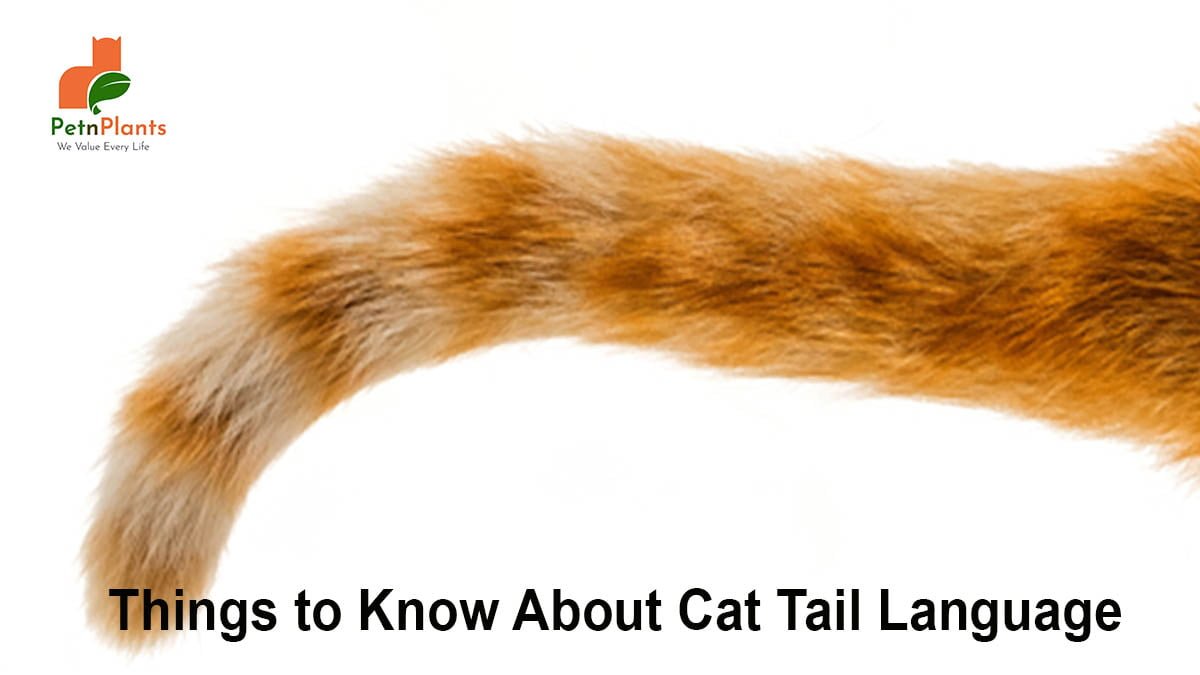How To
Latest
Pet Care
How to Groom Your Dog at Home with the Right Dog Grooming KitMarch 19, 2025
We Value Every Life

Cats communicate by moving their tails and ears, eyes, and body postures. Comprehending cat tail language will help one communicate with their cat more effectively. Anyone can study their cat’s body language to determine how the pet feels about specific encounters and determine what scenarios or places make them happy or scared. Reading a cat’s tail language can also aid in detecting disease and pain.
Cats, like dogs, convey their emotions by moving their tails. So, let’s examine the various “wagging” tail movements and understand what it means when a cat wags its tail.
Your cat is furious, annoyed, or angry if they flail its tail or pounds it on the ground. This action indicates that the cat is bothered by something. To put it another way, if someone is petting a cat and it starts thrashing its tail, it’s a way of telling the person to stop. If they don’t, the thrashing tail could be a warning sign that other things such as growling or biting are on the way, so one needs to look out for this kind of cat tail wagging.
When cats are hunting or playing, and if they are moderately agitated or frustrated, they twitch the tips of their tails. Try to read into the scene and search for other clues to understand the kind of mood your cat may be having in this case. The movement of the twitching tail indicates that they are annoyed if they aren’t playing or stalking anything.
Someone’s cat may be intently concentrated on something like a play-toy, another animal in the house, or something outside when they slowly swish their tail from side to side. They could be about to strike! Allowing a cat to indulge in predatory behavior that includes stalking and pouncing is fantastic enrichment for them, so let them do whatever catches their attention.
When a cat is particularly eager to meet someone or another cat, its tail may quiver. Urine marking can occur when a cat’s tail quivers while holding it straight and backing it against a vertical surface.
If anyone sees a cat wagging tail and moving around their area with its tail high in the air, they display confidence and contentment. A straight-up tail denotes contentment and a readiness to be friendly. Also, keeping an eye on the tip of an erect tail is necessary. A small twitch can indicate a very joyful experience in cat tail language.
Since it has been established that context is vital, figuring out why cats wag their tails and why cat flicks tails when I say their name is part of the context. Of course, some people regard cats as aloof and unresponsive creatures, but experts are once again on the side of the felines. According to some researchers, cats may recognize various words related to food items and their names given by an owner. If a pet owner is having a meaningful conversation with their cat, they’re unlikely to grasp what the person is saying, but they might pick up on the tone we’re using.
This implies that they’re likely responding if anyone wants to know about cat wagging tail meaning. But what does it imply?
1. Pay attention to the tip of a cat’s tail. In cat tail language, if a cat’s tail is going upright as soon as someone is talking to them and If the tip of the tail is moving, they’re probably thrilled to see the person. Thus, it is one of the significant reasons behind a cat’s tail shaking sometimes.
2. Often, people want to know why cats wag their tails while lying down. When someone calls a cat’s name or chats to them while they’re lying about and watch their tail moving gently, they likely trust you and feel safe with you.
3. If a cat hasn’t been spayed or neutered and starts straightening its tail and shivering, they are most likely marking its territory. It could be triggered by the sudden attention, such as when someone tries to chat with them. When kittens are young, they may not spray in large amounts or at all; thus, this behavior may go unrecognized, and pet owners keep wondering why cats shake their tails.
4. If a cat has heard someone talk loudly or been reprimanded for clawing the sofa, its tail will most likely touch the ground. Even if their outburst had nothing to do with them, it could happen. They may also feel uneasy in the presence of a new pet or a stranger in the house, and this may be the case in case anyone is looking for the answer to what it means when cats wag their tails.
5. Cats not only dream but also try to get rid of the stress from the day. Cats may be daydreaming about the pleasant pets they got or a treat that the owner might have given them, and they may hit the rewind button on their favorite hunting game. As a result, witnessing your cat twitch their tail or any other part of their body could indicate that they’ve had a dream.
Although cats can be difficult to understand sometimes, several telltale indicators can help figure out cat tail language. A cat’s body language, vocalizations, and tail motions will most likely reveal some of their more noticeable moods. However, other signs, such as following the movement of a cat’s tail and body postures, can reveal much more information. Cats, like people, experience a wide spectrum of basic emotions: they are happy, sad, terrified, relieved, and even furious. Learning to recognize these feelings and responding is crucial to having a strong relationship with your cat.
0